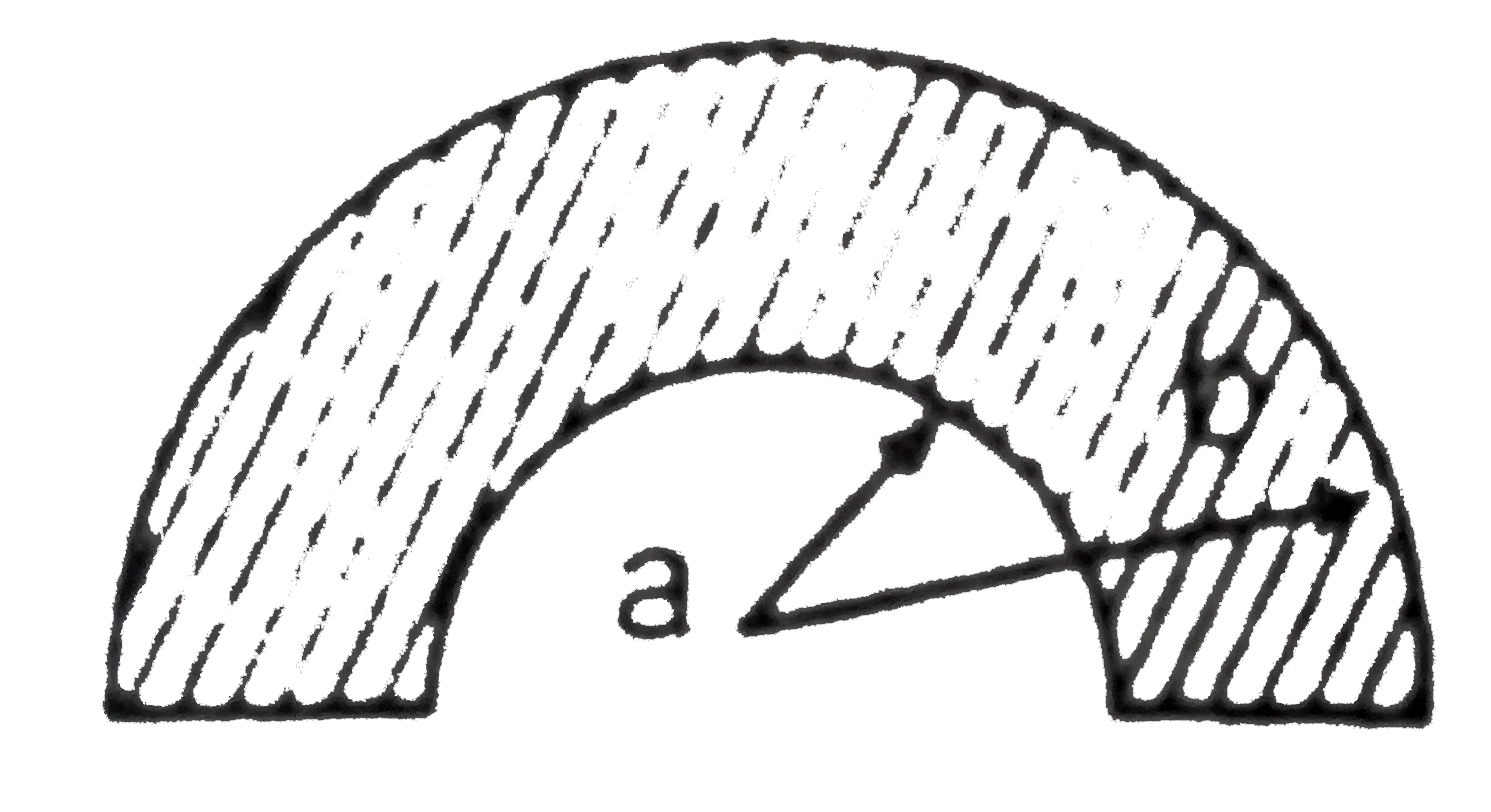Consider a solid cube made up of insulating material having a uniform volume charge density. Assuming the electrostatic potential to be zero at infinity, the ratio of the potential at a corner of the cube to that at the centre will be
2
√3/2
√2
1
The correct Answer is:A
kρ(a3)/a18Kρ(2a)3/2a=2
Topper's Solved these Questions
- BOOK - ERRORLESSCHAPTER - ELECTROSTATICSEXERCISE - NCERT BASED QUESTIONS (Capacitance)59videos
ELECTROSTATICS
- BOOK - ERRORLESSCHAPTER - ELECTROSTATICSEXERCISE - NCERT BASED QUESTIONS (Grouping of Capacitors)58videos
ELECTROSTATICS
- BOOK - ERRORLESSCHAPTER - ELECTROSTATICSEXERCISE - NCERT BASED QUESTIONS (Electric Dipole)21videos
ELECTROSTATICS
- BOOK - ERRORLESSCHAPTER - ELECTRONICSEXERCISE - Assertion & Reason26videos
ELECTRONICS
- BOOK - ERRORLESSCHAPTER - MAGNETIC EFFECTS OF CURRENT EXERCISE - ASSERTION & REASON18videos
MAGNETIC EFFECTS OF CURRENT
Similar Questions
Knowledge Check
- Question 1 - Select One
Consider a cube having a uniform volume charge density. Find the ratio of electrostatic potential at the centre to the potential at a corner of the cube
A2B√3/2C√2D1 - Question 2 - Select One or More
Which statement about a system of point charges that are fixed in space is necessarily true? Assuming electrostatic potential energy at infinity to be zero.
AIf the electrostatic potential energy of the system is negative, net positive work by an external agent is required to take the charges in the system back to infinity.BIf the electrostatic potential energy of the system is zero, all charges in the configuration cannot have same sign.CIf the electrostatic potential energy of the system is negative, net positive work by an external agent was required to assemble the system of charges.DIf the electrostatic potential energy of the system is negative, then there is no electric force anywhere in space on any other charged particle not part of the system. - Question 3 - Select One
A solid sphere of radius R has charge q uniformly distributed over its volume. The distance from it surfce at which the electrostatic potential is equal to half of the potential at the centre is
ARB2RCR3DR2
A sphere of radius 2R has a uniform charge density p. The difference in the electric potential at r = R and r = 0 from the centre is:
View SolutionBoth question (33) and (34) refer to the system of charges as shown in the figure. A spherical shell with an inner radius 'a' and an outer radius 'b' is made of conducting material. A point charge +Q is placed at the centre of the spherical shell and a total charge -q is placed on the shell.

Assume that the electrostatic potential is zero at an infinite distance from the spherical shell. The electrostatic potential at a distance R(a<R<b) from the centre of the shell isView SolutionThere is a uniformly charged non conducting solid sphere made of material of dielectric constant one. If electric potential at infinity be zero. Then the potential at its surface is V. if we take electric potential at its surface to be zero. Then the potential at the centre will be
View SolutionAn insulating solid sphere of radius R has a uniformaly positive charge density ρ. As a result of this uniform charge distribution there is a finite value of electric potential at the centre of the sphere, at the surface of the sphere and also at a point out side the sphere. The electric potential at infinity is zero.
Statement-1: Wgen a charge 'q' is taken from the centre to the surface of the sphere, its potential energy charges by qρ3∈0
Statement-2 : The electric field at a distance r(r<R) from the centre of the the sphere is ρr3∈0View SolutionA non-conducting semi circular disc (as shown in figure) has a uniform surface charge density σ. The ratio of electric field to electric potential at the centre of the disc will be
 View Solution
View Solution

